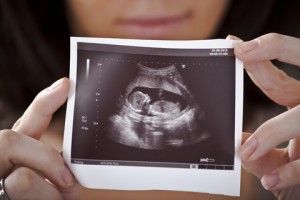The Texas Pain Bill, which establishes a state interest in protecting the lives of preborn children who feel pain, has predictably been attacked by the anti-Life media, which challenges the scientific evidence.
The Dallas Observer called the evidence “medically questionable,” and cited a “fact” that “there is no conclusive evidence to suggest that fetuses actually feel pain.” The Observer ignores dozens of current peer-reviewed fetal pain studies that confirm the capacity of a 20-week child to feel pain in utero.
Numerous scientific studies and physicians recognize that preborn children feel torturous pain from abortion by twenty weeks gestation, if not earlier. Contrary to The Observer’s ludicrous claim that the reality of fetal pain is based on a study from 1987 that has been “debunked,” ample recent evidence from the scientific community supports the bill.
 What we know is the nervous system is developed to a level of maturity where pain can be sensed. We do see physical reaction to stimulation, and not only with respect to movement of the child, but release of stress hormones and other responses such as elevated heart rate. These are all objective responses to pain. And that is superimposed on the knowledge that the circuitry is developed which enables a human to feel and experience pain.
What we know is the nervous system is developed to a level of maturity where pain can be sensed. We do see physical reaction to stimulation, and not only with respect to movement of the child, but release of stress hormones and other responses such as elevated heart rate. These are all objective responses to pain. And that is superimposed on the knowledge that the circuitry is developed which enables a human to feel and experience pain.
Rep. Greg Bonnen, MD, (R- Friendswood), neurosurgeon at Memorial Hermann Southeast and founder of the Texas Brain and Spine Center
[A] fetus after 20 weeks of gestation has all the prerequisite anatomy, physiology, hormones, neurotransmitters, and electrical current to close the loop and create the conditions needed to perceive pain. In a fashion similar to explaining the electrical wiring to a new house, we would explain that the circuit is complete from skin to brain to back.
Jean Wright, MD, anesthesiologist, Savannah, Georgia, specializing in Pediatric Critical Care Medicine at Memorial Health University Medical Center and previously Professor and Pediatric Chair of Mercer School of Medicine
CLICK LIKE IF YOU’RE PRO-LIFE!
There is ample biologic, physiologic, hormonal, and behavioral evidence for fetal and neonatal pain. As early as 8 weeks post-fertilization, face skin receptors appear. At 14 weeks, sensory fibers grow into the spinal cord and connect with the thalamus. At 13-16 weeks, monoamine fibers reach the cerebral cortex, so that by 17-20 weeks the thalamo-cortical relays penetrate the cortex. […] In fact, by 20 weeks post-fertilization… the fetal brain has the full complement of neurons that are present in adulthood (Lagercrantz H et al. Functional development of the brain in fetus and infant. Lakartidningan 1991;88:1880-85).
Colleen A. Malloy, MD Assistant Professor, Division of Neonatology/ Department of Pediatrics Northwestern University Feinberg School of Medicine
It can be clearly demonstrated that fetuses seek to evade certain stimuli in a manner in which an infant or an adult would be interpreted as a reaction to pain.
Richard T.F. Schmidt, MD, past President of the American College of Obstetricians and Gynecologists







